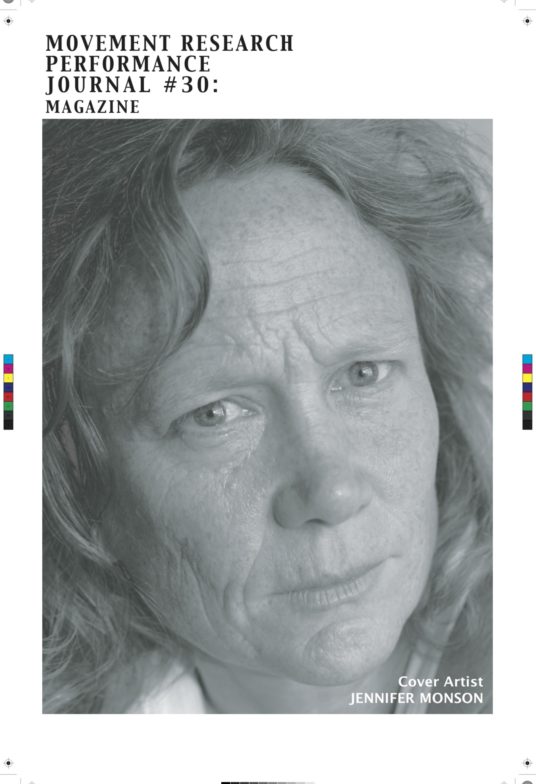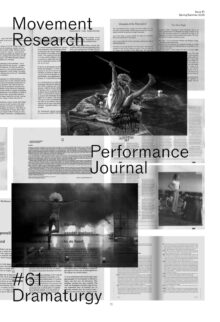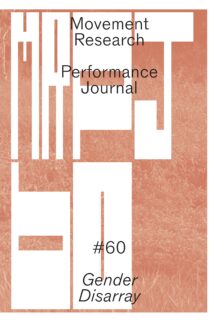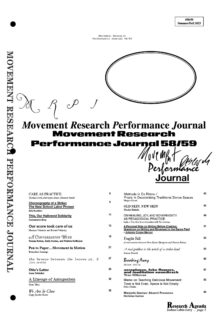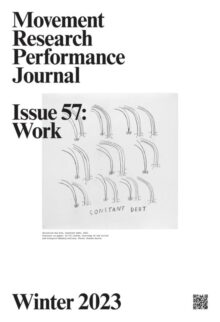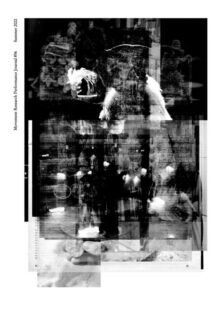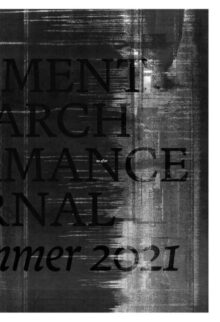This issue is OUT OF PRINT. You can purchase a digital issue in the sidebar on the right of this page.
EDITORS’ STATEMENTS
MPJR #30 is an experiment.
A set of inquiries regarding the possible performance of the journal.
Possibilities.
1. Not just the performance of the reader and the text, but also the journal’s physical performance in the culture. How might this particular issue perform itself differently in terms of its relation- ship to the many environments where it will find itself? 2. It is also an object which could just be seen as paper with marks and stains. Feel free to also disassociate it from agreed–upon linguistic meanings. So, slap it. Draw on it. Lose it. Lay it on the floor. Let the new puppy pee on it. Sleep on it. Wrap fish and chips in it. Give it away to someone you love. Read it onstage or toss it out the window in your next piece. Or wear it over your head in the rain. And after you have perhaps exhausted the possibilities you care to engage, read it again. Reassociate it to agreed–upon linguistic meanings. Has it changed? Have you changed?
Change.
I haven’t changed. I said once before that I never wanted to do the journal again, but I came back for more. Because it is a beast. And beasts are scary, and monstrous, and unforgiving, and willful, and bigger than you are. And they push you to your limits where you can discover new things. It’s my form of race car driving. Or downhill skiing.
That said, a special thanks to Levi Gonzales, Koosil-ja, Isabel Lewis, Alejandra Martorell, and Carla Peterson, all of whom gave me the initial encouragement to put together a team and follow this inquiry. And to Jill Sigman, for keeping track of all the balls even though they were primarily always up in the air. Last, but not least, superthanks to the writers, artists, MR Staff, graphic designer, copy editors, and the editorial team who made this possible.
Trajal Harrell
I signed on to this editorial team because this issue of the Journal was an experiment I wanted to see happen. What if the workings of our “downtown” dance world could be accessible to, interesting for, and informed by a larger sphere? And how could the MRPJ be a vehicle for that? In thinking about these things, a distinction bubbled up: I had never thought about the difference between a magazine and a journal. In its most prosaic sense, a journal is something personal—a confessor, a repository for inner language. In an academic sense, it is a place for the construction and dissection of a shared body of knowledge. The MRPJ has indeed been both. But a magazine is a beast of a different stripe; it creates hype, edge. It builds identity. A magazine is a picture of a culture caught in the act of striving.
So what would it be for the MRPJ to be a magazine? What if the articles were not related thematically but like bars in a happening neighborhood or videos on YouTube?—component parts in some vague phenomenon of now. In order to look at how “downtown” dance negotiates with the larger world, this MRPJ, qua magazine, itself became an instance of that.
Many thanks to everyone who made this issue happen, particularly to Darrah and Reghan for hitting the ground running, Carla for her radical faith in our project, and Trajal for his vision, smarts, and undying get-up-and-go.
Jill Sigman
Having spent the last six years as a freelance writer for Dance Magazine, Young Dancer, Dancer, and the online Dance Insider, I am well-acquainted with the traditional magazine format. The Movement Research Performance Journal, however, is less familiar. Although I have long admired many of the artists involved with Movement Research, I have not been directly engaged with the organization, given my heavy involvement with New York City’s Irish dance community, whose concerns and aesthetics are arguably quite different from those of the downtown dance community. When I was asked to join the editorial team, I was immediately intrigued. Not only would my specific journalistic background be well-served, but also, the team’s intention of reaching out to other disciplines through presenting the journal as a magazine resonates strongly with my desire to bridge the practices of contemporary dance and Irish dance within my own choreographic work. My very participation in this process is one manifestation of the goal of connecting to different artistic communities and speaking to a broader readership. As part of the editorial team, I also welcomed the opportunity to engage in dialogue with the writers whose multiplicity of perspectives makes these pages really thought provoking. My sincere thanks to Movement Research and the entire team for inviting me to be part of this process.
Darrah Carr
